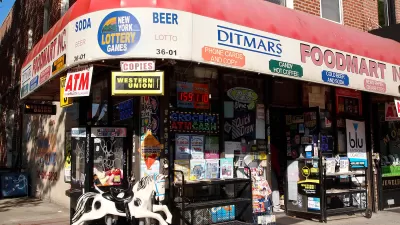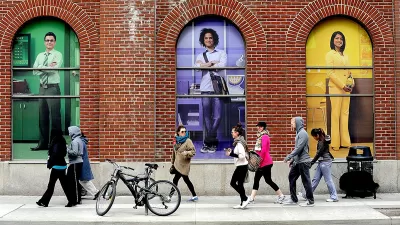Geoff Dyer describes the essential role that a residential component plays in any mixed-use town center. For Dyer, residences are "the substrate on which a healthy mixed-use environment is based."
Why's it so hard for developers to properly value mixing residential in town centers? Perhaps there are still too many barriers in place thanks to government and politics. Dyer considers key advantages to getting over the hurdle, including walkable choice, trip reduction, 24-hour population, a built-in market, transit support, mixed-use integration, horizontal versus vertical mixed-use, and fine-grained urbanism. Then Dyer looks to lessons learned from places that get it right:
"One of my favorite precedents is Habersham in South Carolina by DPZ & Co. and the Habersham Land Company. Located in the middle of nowhere, in a modest economy, and in a location with predominantly low-cost single family homes, Habersham has quietly grown out of the low country swamp to become a fantastic mixed-use, walkable village. Vertically mixed-use live/works with residences over commercial, a variety of row houses, and small apartment houses lining the regional roadway. An example of fine-grained incremental urbanism, Habersham is an important model for the future where large development loans are becoming scarce as the market continues to shift toward walkable mixed-use environments."
Habersham's lessons learned include small lots in the town center for incremental development in an uncertain economy, paying attention to block structure, and flexible zoning. Dyer goes on to address large-scale mixed use in a similar fashion.
Thanks to Hazel Borys
FULL STORY: Get your Multi-Family into a Walkable Town Center!

Alabama: Trump Terminates Settlements for Black Communities Harmed By Raw Sewage
Trump deemed the landmark civil rights agreement “illegal DEI and environmental justice policy.”

Planetizen Federal Action Tracker
A weekly monitor of how Trump’s orders and actions are impacting planners and planning in America.

How Atlanta Built 7,000 Housing Units in 3 Years
The city’s comprehensive, neighborhood-focused housing strategy focuses on identifying properties and land that can be repurposed for housing and encouraging development in underserved neighborhoods.

In Both Crashes and Crime, Public Transportation is Far Safer than Driving
Contrary to popular assumptions, public transportation has far lower crash and crime rates than automobile travel. For safer communities, improve and encourage transit travel.

Report: Zoning Reforms Should Complement Nashville’s Ambitious Transit Plan
Without reform, restrictive zoning codes will limit the impact of the city’s planned transit expansion and could exclude some of the residents who depend on transit the most.

Judge Orders Release of Frozen IRA, IIJA Funding
The decision is a victory for environmental groups who charged that freezing funds for critical infrastructure and disaster response programs caused “real and irreparable harm” to communities.
Urban Design for Planners 1: Software Tools
This six-course series explores essential urban design concepts using open source software and equips planners with the tools they need to participate fully in the urban design process.
Planning for Universal Design
Learn the tools for implementing Universal Design in planning regulations.
Jessamine County Fiscal Court
Caltrans
Institute for Housing and Urban Development Studies (IHS)
City of Grandview
Harvard GSD Executive Education
Toledo-Lucas County Plan Commissions
Salt Lake City
NYU Wagner Graduate School of Public Service





























